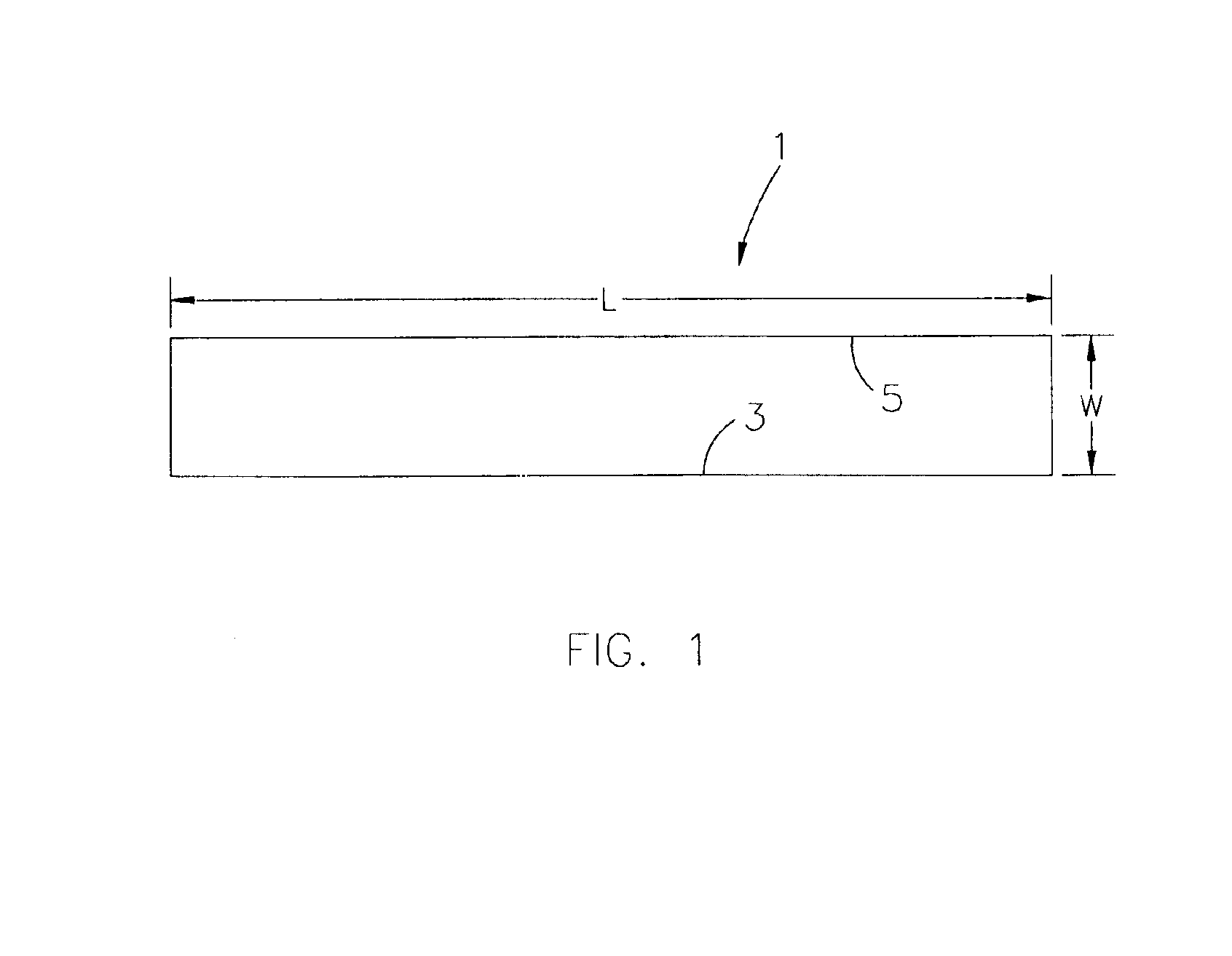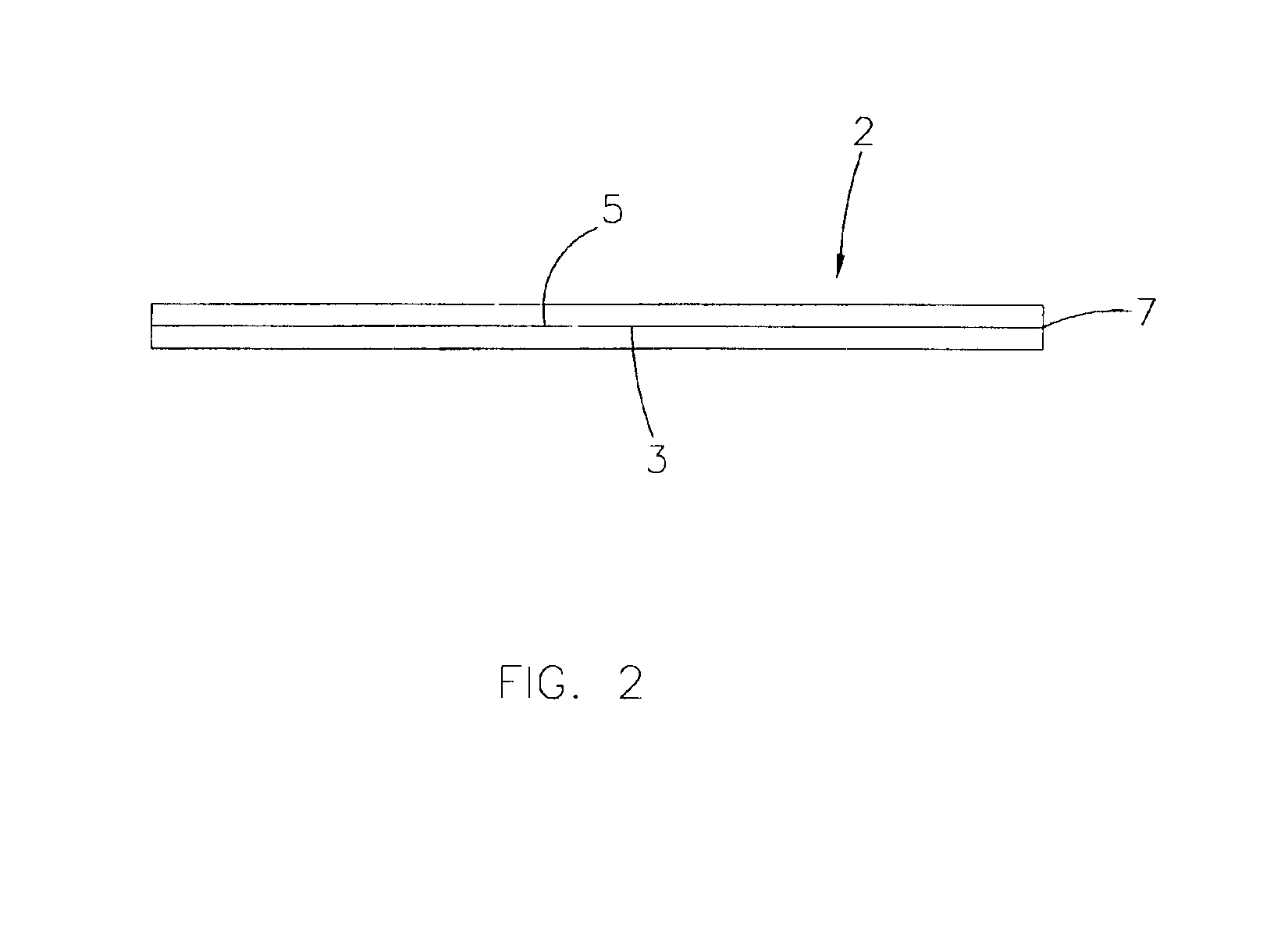Helically formed cylinder of varying length and diameter
a cylindrical body, variable-diameter technology, applied in the direction of engines without rotary main shafts, machines/engines, instruments, etc., can solve the problems of inability to ensure greater accuracy, quality control problems, and possibility of errors accumulating, so as to improve accuracy and quickly learn how to use i
- Summary
- Abstract
- Description
- Claims
- Application Information
AI Technical Summary
Benefits of technology
Problems solved by technology
Method used
Image
Examples
Embodiment Construction
[0074]FIG. 1 shows sheet 1 of a predetermined length L, measured along parallel sheet edges 3 and 5, and width W, measured as the perpendicular distance between edges 3 and 5. The sheet is wrapped, bringing edges 3 and 5 together, to compose the convolute cylinder 2 of FIG. 2. When forming the minimum circumference, the sheet is wrapped convolutedly with a helical movement M equal to zero and perimeter equal to sheet width. A joint 7 is composed, by having the lengthwise sheet edges 3 and 5 meet, and joint 7 runs parallel with the longitudinal axis of the cylinder. Here, circumference C, is equal to sheet width W, and cylinder length La is equal to the sheet length L. As the tube is twisted or articulated end to end, the seam takes a progressively helical form, and because the sheet surface area is predetermined by the sheet, the cylindrical surface exchanges length for circumference. It is to be understood that because the axial geometry of the ends varies as the cylinder is manipu...
PUM
 Login to View More
Login to View More Abstract
Description
Claims
Application Information
 Login to View More
Login to View More - R&D
- Intellectual Property
- Life Sciences
- Materials
- Tech Scout
- Unparalleled Data Quality
- Higher Quality Content
- 60% Fewer Hallucinations
Browse by: Latest US Patents, China's latest patents, Technical Efficacy Thesaurus, Application Domain, Technology Topic, Popular Technical Reports.
© 2025 PatSnap. All rights reserved.Legal|Privacy policy|Modern Slavery Act Transparency Statement|Sitemap|About US| Contact US: help@patsnap.com



